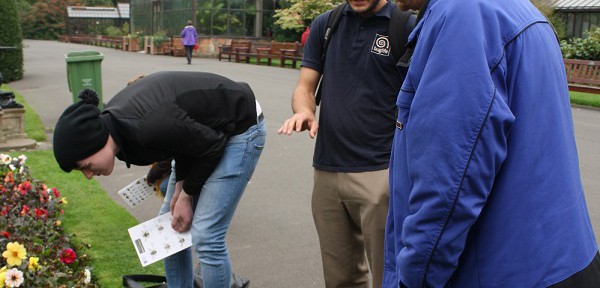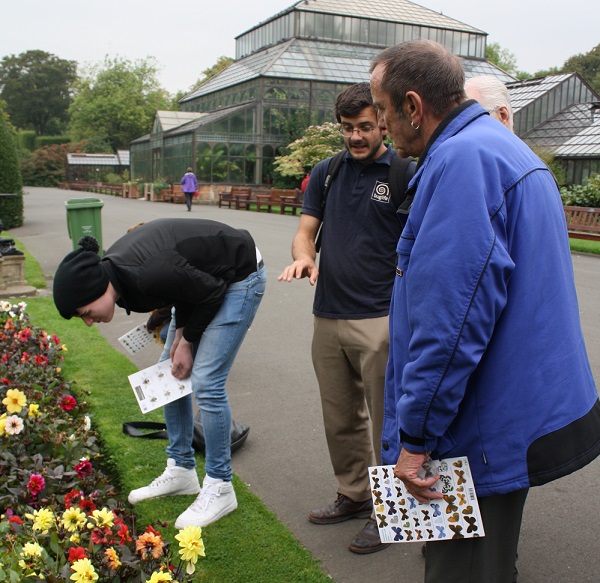
Harry Woolner is a trainee with the TCV Natural Communities Project and is on a placement with Buglife. Amongst his community engagement projects he has been taking participants out to learn about their local wildlife. Here he reflects on how building these basic skills and confidence in citizen science can have a big effect on people, as well as nature.
In 2014, I led walks across the central belt for a wide range of organisations and individuals that supported people to experience local wildlife and identify animals and plants found along the way. I witnessed the unremittingly positive impact these sorts of experiences have on people, which is especially wonderful to see when you are with people who might not, for whatever reason, usually have such opportunities. Two occasions stand out as perfect examples of just how important such experiences of learning about wildlife can be for people.
The first occurred at Possilpark, Glasgow, when I delivered a bug hunting session to children during the school holidays. One of the children managed to find a huge Violet Ground Beetle (Carabus spp.) hiding under a large rock at Possil Meadow. The excitement this created in all of the adults and children present was incredible, giving them an insight into the stunning and diverse wildlife they had right on their doorstep and, through my support, helped them to name and understand this wildlife a little better.
The second example occurred at the end of a series of Glasgow-based wildlife walks I delivered for people with mental health support needs. During the walks the participants learned a little about how to catch different invertebrates, name them, and understand something of their life cycles. I think the experiences helped people to better understand and make more sense of the world around them, and their place in it. At the end of the final session, one of the regular participants told me that the sessions had profoundly affected him and he was extremely keen to continue learning more next year, requesting that we ensure there were similar activities for 2015. I was deeply moved by just how genuine and heartfelt his comments were, especially given that he had struggled with isolation in recent years. This example shows just how powerful it can be for people when they are supported to fully engage with, and learn about, their local wildlife.
There are many opportunities to get involved with sessions like Harry’s to learn about local wildlife. Many are free and are often delivered by local health organisations and community and environmental charities. See our website for lots of ideas of how you can get involved.
